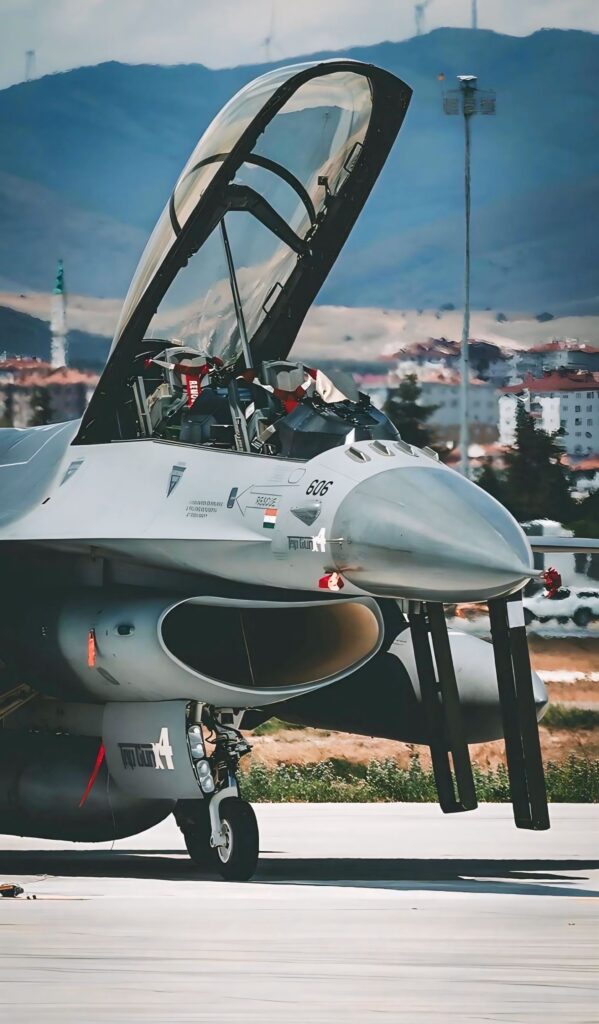
The General Dynamics F-16 Fighting Falcon is one of the most successful and widely used multirole fighter aircraft in aviation history. Developed in the 1970s for the United States Air Force, the F-16 was designed to be a lightweight, highly maneuverable fighter capable of excelling in both air-to-air combat and ground attack missions. Over time, it has proven itself as a versatile platform, serving in the air forces of more than two dozen nations and undergoing continual upgrades to remain competitive with modern threats.
The F-16’s origins lie in the Lightweight Fighter Program of the early 1970s. At the time, the U.S. Air Force sought a smaller, more agile aircraft to complement the heavier and more complex F-15 Eagle. General Dynamics, which later became part of Lockheed Martin, developed the YF-16 prototype to meet this requirement. The aircraft first flew in 1974 and quickly impressed with its agility, speed, and advanced technology. By 1976, the F-16 had been selected for production, and it entered operational service with the U.S. Air Force in 1979.
One of the defining features of the F-16 is its use of a fly-by-wire flight control system. Instead of relying solely on mechanical linkages, the aircraft’s control inputs are transmitted electronically, allowing for more precise handling. This system enabled the designers to give the F-16 relaxed static stability, which enhances maneuverability. Combined with its bubble canopy for excellent visibility, side-mounted control stick, and reclined ejection seat for pilot comfort, the F-16 became known as a “pilot’s aircraft.”
The fighter is powered by a single turbofan engine, either the Pratt & Whitney F100 or the General Electric F110, depending on the variant. These engines provide more than 28,000 pounds of thrust with afterburner, allowing the F-16 to reach speeds over Mach 2. Its thrust-to-weight ratio gives it exceptional acceleration and climb performance, qualities that make it a formidable opponent in air combat.
In terms of armament, the F-16 is equipped with a 20mm M61 Vulcan cannon and has 11 hardpoints for carrying a wide range of weapons. These include air-to-air missiles such as the AIM-9 Sidewinder and AIM-120 AMRAAM, as well as air-to-ground munitions like laser-guided bombs, JDAMs, and precision-guided missiles. This flexibility allows the F-16 to perform missions ranging from air superiority and interception to close air support and suppression of enemy air defenses.
Over the decades, the F-16 has been continually upgraded with new avionics, radar systems, and electronic warfare capabilities. Modern variants feature advanced AESA radars, helmet-mounted cueing systems, and the ability to integrate with next-generation weaponry. These upgrades have kept the aircraft relevant even in an era dominated by fifth-generation fighters like the F-35 Lightning II.
The Fighting Falcon has seen extensive combat service with the U.S. and allied air forces, proving its reliability in conflicts ranging from the Gulf War to operations in the Middle East and the Balkans. Its relatively low operating costs and proven combat record have made it a favorite for export, with more than 4,600 built since production began.
In summary, the General Dynamics F-16 Fighting Falcon is a landmark in fighter design. It combines agility, versatility, and affordability in a way that has kept it at the forefront of military aviation for more than four decades. Even as newer aircraft enter service, the F-16 remains a vital component of air forces worldwide, a testament to its enduring design and adaptability.


